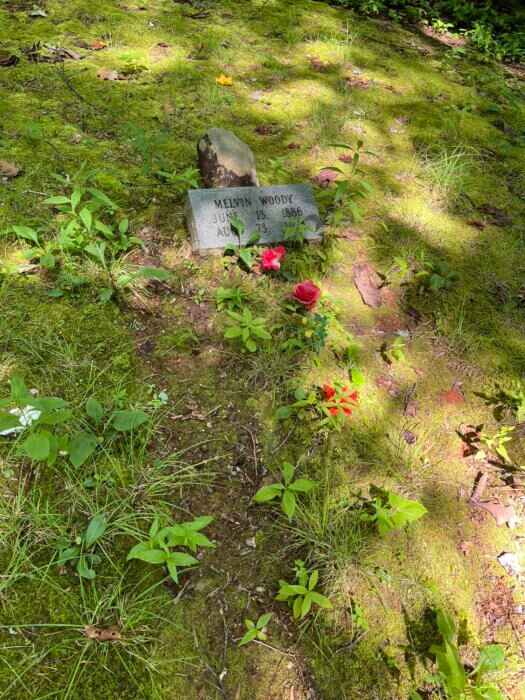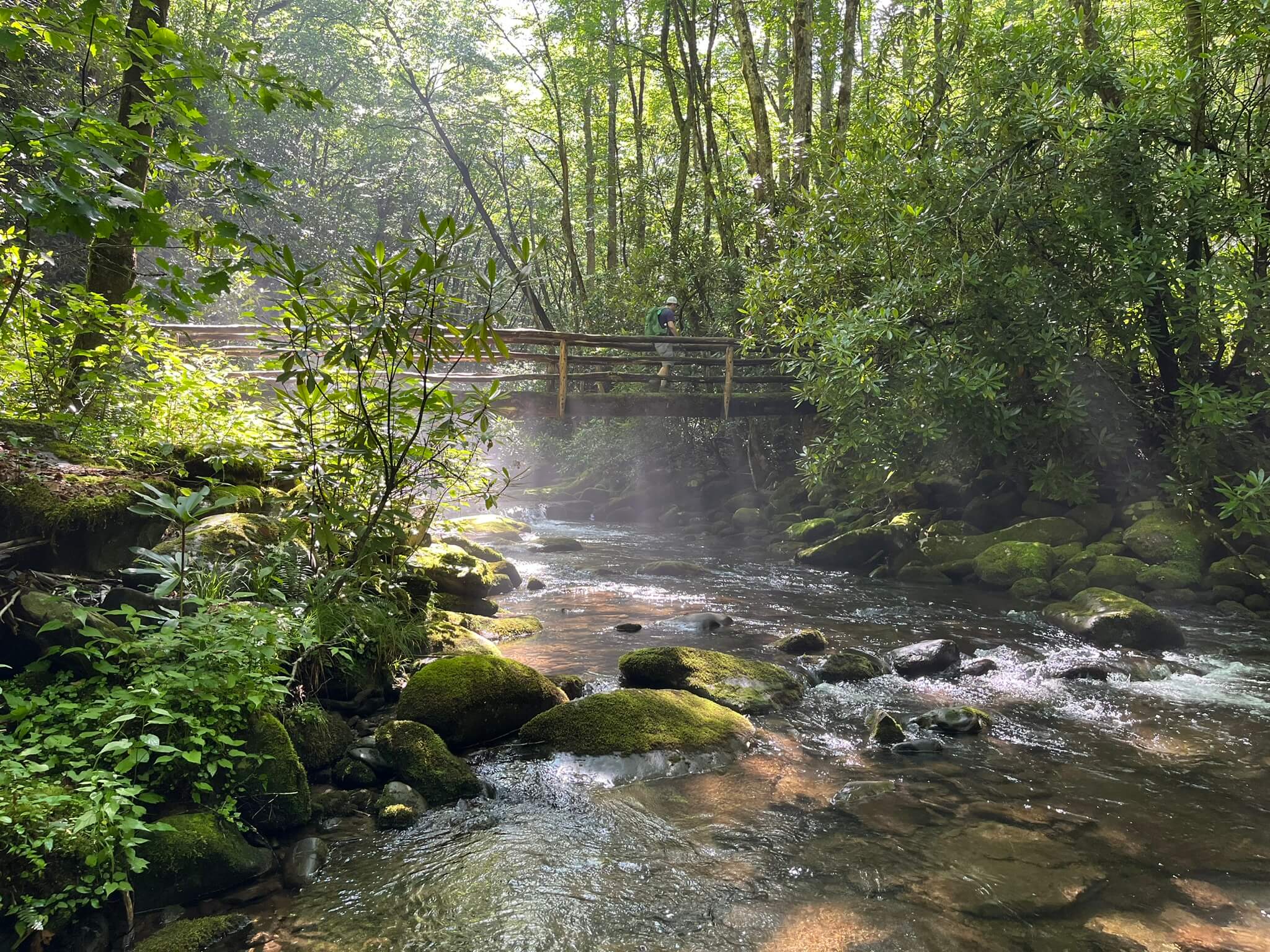by Danny Bernstein
There are several reasons to love the Noland Creek Trail.
It is an easy trail on an old road, rising only 900 feet in nine miles, out and back.
It is a quiet trail; not too many people venture on Lake Shore Road out of Bryson City, North Carolina. Those who do continue to the tunnel and the end of the road.
But me, I love Noland Creek Trail because it is full of artifacts. It is full of stuff that showed people lived here. We all know there were many communities in the park, but I love to see the remains.
Beth Ransom led a group of fourteen hikers on July 9, 2024, on Noland Creek as part of the Trails Forever Hikes program.

The group meets at the trailhead on Lake Shore Road, colloquially called “the road to nowhere”. We start down a good trail and quickly land on an old road, now graveled, which parallels Noland Creek. A wide path allows the group to socialize as we walk. The road was built in 1934 by the Civilian Conservation Corps.
Sycamore and beech trees line the road. There was little logging here compared to other parts of the North Shore. We cross two strong, well-maintained bridges and reach an old home site. Without the guidance of Beth, our leader, I would have missed the homesite completely. But once Beth points it out, the site is obvious. A dead-giveaway are the boxwoods that line the entryway. Boxwoods are not native to the area but were a favorite bush to plant in front of houses.

Another bridge and a steep, narrow trail leads to a cemetery. The leader had explored this path on her scout hike and decided that most hikers would not enjoy this diversion. We continue on Noland Creek Trail where we reach the small community of Solola proper, where most people lived. After bridge number four, we explore what was a power plant, 1930s style. We take a side trip to the left of the trail to find a huge concrete base and supports for the waterwheel that generated electricity.
Beyond the fifth bridge was the Mill Creek school. The school was also informally called the Rust school, “Rust” being a name that will come up several times. A couple of tables will be our lunch spots at the entrance to Campsite 64.


However, we continue on an elegant wooden foot bridge high above the water. The trail keeps on, but we veer right to see the Rust property where a well-preserved stone wall remains. We climbed up to Branton Cemetery with 29 graves. Many members of the Branton family are buried as well as some Woodys and folks who worked for the Rusts. But no Rusts… mmm… I wonder why.
The cemeteries here explain why the road is still maintained so well. On Decoration Day, park staff bring jeeps, tarps, port-o-johns and other equipment to make the day comfortable for descendants of the people buried in the cemeteries. Friends of the Smokies helps fund this effort.

We turn around and head back to the picnic tables. After lunch, we walk to our starting point and beyond. Our goal is to go past Campsite 66 and maybe see a little of Fontana Lake. Just a mile out and a mile back.
But to our surprise, we never get to Campsite 66. We reach an impasse from a high-water level from Fontana Lake. Water has been pushed back up to the Noland Creek discharge point. As there is no trail upon which to walk, we return to our cars located at the parking lot on Lakeview Drive.

At home, I consulted a couple of books published by Smokies Life.
According to History Hikes of the Smokies, “Phillip Rust was the equivalent of landed gentry on Noland Creek”. He had a lot of land – pasture, power plants, and a fish hatchery.” Intrigued, I google Phillip Rust and found this: https://reflectionsofoldeswain.blogspot.com/2013/09/noland-creek-was-home-story-of-cole.html
Phillip Goodenow Rust
In the early 1930’s, a young and wealthy MIT graduate and businessman named Phillip Goodenow Rust moved to Noland Creek, where he proceeded to create a mountain estate unlike anything seen to that point in Swain County. Wealthy not only by birth but also by virtue of hard work, Rust was a successful businessman who had recently married Eleanor Francis DuPont, an heir to the DuPont Chemical family fortune. He bought up over 4,300 acres of heavily logged land in the Noland Creek watershed, upon which he undertook a massive reforestation project, built a summer cottage for his family, cottages for friends and family who wished to come and vacation, a nurse’s cottage, sheep and equestrian barns, a trout farm, and a kiln for Eleanor, who was an avid potter.
Continuing my rabbit hole search, I google Eleanor Francis DuPont. There are many, many DuPonts in the United States; it’s an old, large family. But she was daughter of the president of DuPont, Irenee DuPont. I was impressed. I wonder how she liked Noland Creek.

TRAILS FOREVER HIKES – Spots Available through October 2024
Take a hike and help restore the most loved trails in the Smokies. The Forever Trails Hikes program offers expert guided hikes twice a month now through October 2024. It’s just $25 per hike and all proceeds go to Trails Forever. Space is limited, so check out the schedule and register at https://friendsofthesmokies.org/hike-with-trails-forever/
